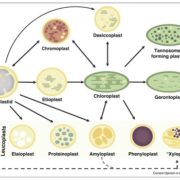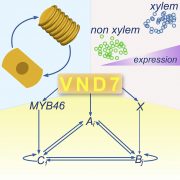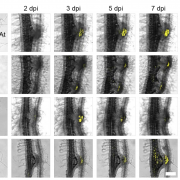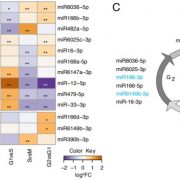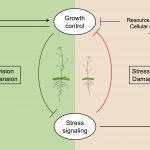The peroxisome just updated its profile picture (Nature Comms.)

The ability to utilize stored energy is crucial for organism growth and development. For example, seed storage lipids go through hydrolysis and beta-oxidation to provide energy for seed germination. In this process, beta-oxidation occurs in the peroxisome, a subcellular compartment that houses many metabolic reactions. Insights into peroxisome structure have now emerged from a study by Wright and Bartel. They discovered many membrane-enclosed vesicles free-floating in the peroxisome matrix; they named these intralumenal vesicles, ILVs. The observation was made possible by the relatively large Arabidopsis peroxisomes present during seedling development and improved bright fluorescent protein reporters. Further examining how the ILVs are formed, the authors show that the ESCRT (endosomal sorting complexes required for transport) machinery is involved in deriving the ILVs from the peroxisome outer membrane; in addition, the peroxisome shrinks while forming ILVs. Peroxisome size dynamic has been discussed in previous studies: when beta-oxidation is impaired, the peroxisomes are enlarged. Here, the authors show that peroxisomes not only enlarge in Arabidopsis beta-oxidation mutants, but that they also form fewer ILVs, and the ILVs are often still attached to the peroxisome outer membrane. Based on these findings, the authors proposed a model: as insoluble fatty acids are incorporated into the peroxisome lipid bilayer (outer membrane), fatty acid-enriched membranes may form as ILVs to supply fatty acids for beta-oxidation. (Summary by Yun-Ting Kao @YTingKao) Nature Comms. 10.1038/s41467-020-20099-y



